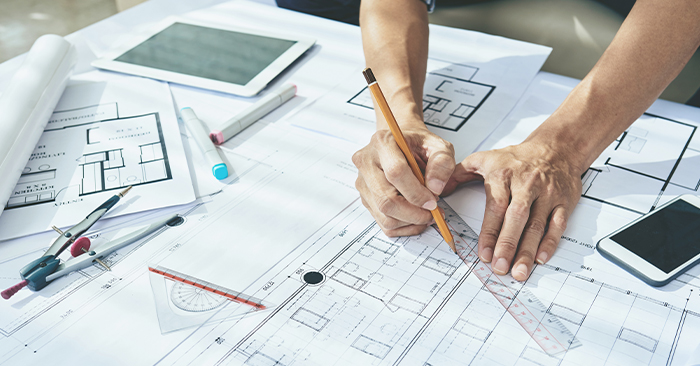In 2008, the 179D Energy Efficient Commercial Building Program was modified as a powerful stimulus to the architecture and design Community. Since then, architects and other designers have been inspired to reduce their carbon footprint by designing more energy-efficient commercial buildings. As a result of this initiative, the program permanently became part of the U.S. tax code in 2020 and expanded its benefits as well.
To help Architects and other designers claim the maximum amount of $5.65 per square foot on eligible designs, KBKG has outlined its own process when helping clients claim the Deduction. This method parallels the Five Phases of Architecture defined by the American Institute of Architects (AIA), which has led KBKG’s clients to successfully obtain every dollar it has ever claimed from 179D.
- Find the Provider
To begin searching for a trusted provider, potential candidates for 179D should look for key characteristics that a reliable advisor possesses. A dependable provider is one whose team consists of experts in the industry with proper certifications, prepares a clear roadmap to claim 179D, and is transparent with not only consulting fees but also in setting expectations for how much a potential candidate might be able to claim. - Initiate the Project
The foundation of any project marks the groundwork for success, which is why KBKG effectively takes its time to collect all the necessary information and establish essential goals. As a full-service provider, KBKG uses the data provided to work closely with clients to identify expectations and, if necessary, uses its tax-exempt team to help clients secure signed allocation letters – an added service offered to clients at no additional cost. - Model the Design
KBKG’s in-house technical team consisting of energy modelers and engineers examines the outlines of the client’s drawings to create models of the building using approved software. With this preliminary design concept, KBKG provides layouts that include sketches and diagrams of the building to convey the design’s overall energy efficiency. - Evaluate the Design
During this phase, KBKG’s professional engineers inspect every part of the building’s design in person in order to certify the Deduction. Using a third-party, such as KBKG, is required. KBKG’s team thoroughly evaluates every part of the building and its design documents to confirm everything from drawings and outlines to construction and materials was accurately completed. - Establish Eligibility
The multi-disciplinary team of industry experts at KBKG, and its wide-ranging backgrounds in the field, work with clients to help identify which tax-saving opportunities that energy-efficient designs can qualify for. The team at KBKG helps determine the most effective way to receive the maximum value of the Deduction by establishing which materials and components need to be included in the building’s construction.
Following KBKG’s five-step process allows architects and designers to be led through the complexities of designing tax-exempt, energy-efficient commercial buildings. With KBKG, architects and designers can ensure projects are well-planned and effectively executed to meet the requirements for the 179D Deduction.
See If You Qualify Today


